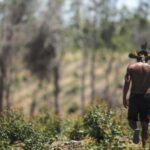How do you navigate which sustainability standards to follow for Forest Investments? I recently attended a Sustainable Finance event at the Euronext Stock exchange in Milan. One of the primary complaints presented by CFOs of major Italian corporations was that sustainability reports have too many words and not enough numbers. Sustainability data is often presented in a separate report, often tied to long narratives, making it incomparable to financial performance. I have observed this to be true in forestry sustainability reporting. Though I strongly believe that qualitative sustainability data underpins a lot of financial performance and other markers of a sustainable investment – there needs to be more effort in linking financial disclosures with sustainability. With the introduction of the International Sustainability Standards Board’s (ISSB) IFRS Sustainability Standards, these financial disclosures are not only ‘nice to have’ but ‘need to have’. In this article, I simplify the requirements of the IFRS S1 and S2 Standards and provide my thoughts on what this means for sustainable forest investment.

Summary of the ISSB
The middle of 2023 marked the introduction of a new sustainability reporting standard for the financial sector, with the International Sustainability Standards Board (ISSB) issuing two IFRS Sustainability Disclosure Standards, the IFRS S1 and IFRS S2. Disclosures under these standards are a requirement for entities adhering to IFRS, and an option for those following other, generally accepted accounting principles or practices (GAAP).
IFRS S1 – General Requirements for Disclosure of Sustainability-related Financial Information
The objective of IFRS S1 is to provide material information on sustainability-related risks and opportunities via general purpose financial reporting to support resource allocation (investment) to entities.
Under IFRS S1, entities are required to disclose information about all sustainability-related risks and opportunities that may affect the entity’s:
- Cash flows
- Access to finance
- Cost of capital over the short, medium, or long term
The usefulness of sustainability-related financial information is enhanced if the information is comparable, verifiable, timely and understandable (keeping in mind, the intended users of the information are finance professionals).
Materiality in Sustainability-Related Financial Disclosures
Information is material if omitting, misstating or obscuring information could reasonably be expected to influence decisions on the basis of those sustainability-related financial reports
The Standard requires entities to disclose on governance, strategy, risk management, and metrics and targets related to sustainability.
IFRS S1 requires both quantitative and qualitative information about the financial position, financial performance, cash flows and sustainability-related risks and opportunities over the short, medium, and long term.
Under the Standards, entities are required to set targets and disclose on sustainability-related risk and opportunity metrics required by IFRS, those set by the entity itself, and those set by law or regulation.
IFRS S1 disclosures are to be provided as part of an entity’s general purpose financial reports, at the same time as its related financial statements, normally covering a 12-month period.
Entities disclosing against the Standard will make a statement of compliance, only if the entity complies with all the requirements of IFRS Sustainability Disclosure Standards.
Please keep in mind that this is merely a summary of the 48-page standard, not to mention all the supporting documentation, which you can find here.
IFRS S2 – Climate-related Disclosures
Like the TCFD requirements, the IFRS S2 requires an entity to disclose information about its material climate-related risks (physical and transition) and opportunities. You can read more about how the TCFD and IFRS S2 differ here. Though the core content touches upon the usual suspects of financial disclosures relating to governance, strategy, risk management and metrics and targets, I wanted to focus on the later – which brings the specifics of the forest sector into account.
Firstly, the basic requirements require entities to disclose the following industry-agnostic information:
- Greenhouse gases (Scope 1, 2, 3 emissions in accordance with the GHG Protocol and other requirements)
- Amount and percentage of assets or business activities i) vulnerable to climate-related transition risks, ii) aligned with climate-related opportunities
- Capital deployment (Amount of capital expenditure, financing or investment deployed towards climate-related risks and opportunities)
- Internal carbon prices (Whether and how the entity is applying a carbon price in decision-making and what is the price)
- Remuneration (Whether and how climate-related considerations are factored into executive remuneration)
Secondly, is a focus on forest industry specific metrics, described via the Guidance under the Renewable Resources & Alternative Energy Sector, where Forestry Management is described in Volume 41. The metrics and activities suggested by IFRS for Forestry are listed below.
| Topic | Metric | Category | Unit of Measure | Code |
| Ecosystem Services and Impacts | Area of forestland certified to a third party forest management standard, percentage certified to each standard. | Quantitative | Hectares, Percentage (%) | RR-FM-160a 1 |
| Area of forestland with protected conservation status | Quantitative | Hectares | RR-FM-160a 2 | |
| Area of forestland in endangered species habitat | Quantitative | Hectares | RR-FM-160a 3 | |
| Description of approach of optimising opportunities from ecosystem services provided by forestlands | Discussion and analysis | n/a | RR-FM-160a 4 | |
| Climate Change Adaptation | Description of strategy to manage opportunities for and risks to forest management and timber production presented by climate change | Discussion and analysis | n/a | RR-FM-450a 1 |
The section further describes the following activity metrics:
| Activity Metric | Category | Unit of Measure | Code |
| Area of forestland owned, leased, and/or managed by the entity | Quantitative | Hectares | RR-FM-000 A |
| Aggregate standing timber inventory | Quantitative | Cubic metres (m3) | RR-FM-000 B |
| Timber harvest volume | Quantitative | Cubic metres (m3) | RR-FM-000 C |
Climate-related Targets
In addition to reporting on the above metrics, IFRS S2 requires entities to set Climate-related targets – against both generic and industry-specific metrics. For each target, the following disclosures are required:
- Metric used to set the target
- Objective of the target
- Scope, or part of entity the target applies
- Period over which the target applies
- Base period from which progress is measured
- Milestones and interim targets
- For quantitative targets, if they are absolute or based on intensity
- How jurisdictional commitments have informed the target.
The ForestLink’s twist on IFRS Sustainability and Climate Target-setting
As an entity committing to IFRS sustainability standards, I would urge you to set targets that go beyond ‘doing less bad’, which would be acceptable if you follow the reporting requirements. What I mean here, is that rather than targets like reducing emissions and continuing to protect areas that are already set aside for conservation values. I urge you to set targets that allow your entity to make the situation better than before your entity’s engagement. Using the generic climate metrics and the forest sector metrics, I provide some examples of targets that would generate benefit creation over ‘doing less bad’ and maintaining the status quo:
| IFRS Metric or Activity to Disclose Example | Target to create a Sustainability Benefit | How it differs from the status quo |
| GHG Emissions | Net remover of CO2 emissions across all investment activities over the short-term | Organizations commonly target emission reductions or net-zero over a long-time horizon |
| Capital deployment to climate-related risks and opportunities | Invest into a R&D program on climate-resilient tree species, Invest in nature restoration beyond best practice requirements | Organizations tend to focus climate capital on decarbonization, forest management certification standards’ requirements, forest fire risk reduction, and where they can have exposure to carbon markets |
| Remuneration | Offer management and employee performance bonuses based on meeting sustainability objectives | Remuneration is typically based on financial performance or meeting operational KPIs having to do with timber maximization over the current reporting period |
| Forest management certification | Focus on certifying previously uncertified areas | Status quo forest investment strategies acquire already certified forests |
| Protected forests | Focus on protecting new and productive (in terms of biodiversity) forestland and manage for conservation values | Status quo is to exclude HCV forest from area under management or protect passively by staying out |
| Forestland with endangered species habitat | Consider forest assets with endangered species habitat an asset that can be protected through your management | Status quo is to exclude these areas from the area under management or protect passively by staying out |
| Ecosystem services optimization | Integrated forest management plans that set targets, and manage for timber, biodiversity, climate, soil/water, recreation/cultural values | Ecosystem services are protected via safeguards from timber harvesting activities |
| Climate change adaptation | Develop a R&D program on climate-resilient tree species and silviculture regimes, develop sophisticated pest and fire management and monitoring programs | Traditional site/species matching of commercial species, with conventional silviculture and fire management |
| Area of forestland owned, leased, and/or managed by the entity | Aim for maximum control to ensure sustainability objectives are managed for through forestland rights and management | Forest assets owned, management is out-sourced |
| Aggregate standing timber inventory | Increase standing timber inventory by integrating more forest products (and less waste), thereby having higher commercial volume | Increase by planting more land with fast-growing commercial species |
| Timber harvest volume | Increase utilization of harvested wood | Increase timber harvested (residual waste remains) |
Key Takeaways from IFRS S1 and S2 for Forest Investors
So, here we are, with another Reporting Standard. If your forest investments follow IFRS, you won’t escape IFRS S1 and S2. Here are my main takeaways:
- If you are already reporting to the TCFD, IFRS S2 reporting will require a small supplement. They remain however, distinct reporting platforms.
- If you are already making sustainability disclosures against the EU SFDR, you will be able to use much of the same data.
- Disclosure on how sustainability or ESG factors are integrated into governance, strategy, risk and opportunity analysis and business goals is now required under IFRS.
- Relating to the goals (and this is my personal opinion) – set targets like those listed above, where you can quantitatively analyze the impact of the intervention on financial performance.
Need Support in setting balanced Sustainability Objectives for your Forest Investment Strategy?
This isn’t rocket-science, but setting sustainability objectives and targets requires intentionality. On the one hand you can go further than solely relying on tools like forest management certification as a proxy for sustainability. On the other hand, your objectives need not go so far as to making outlandish forest protection objectives that make your investment unprofitable. It’s a fine balance and will often be very context specific. If you need support in defining sustainability objectives for your forest investment strategy, such that they meet both regulatory requirements and those set by Standards such as IFRS S1 and S2, please reach out.
Did you like this article? Sign up now for the ForestLink’s newsletter, where you’ll receive technical advice, reflections, and best-practice guidance to support you with your forest-linked investment strategy or business straight to your inbox.





